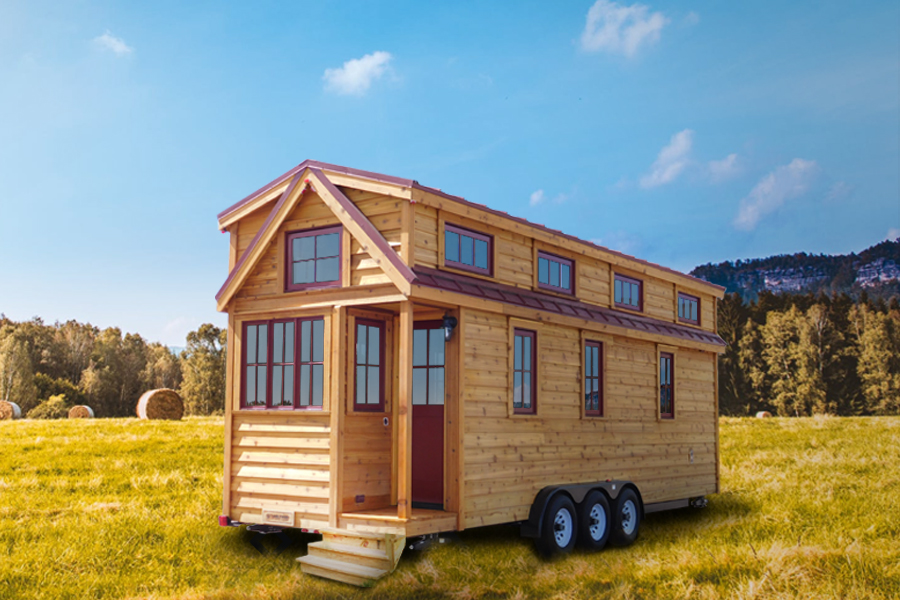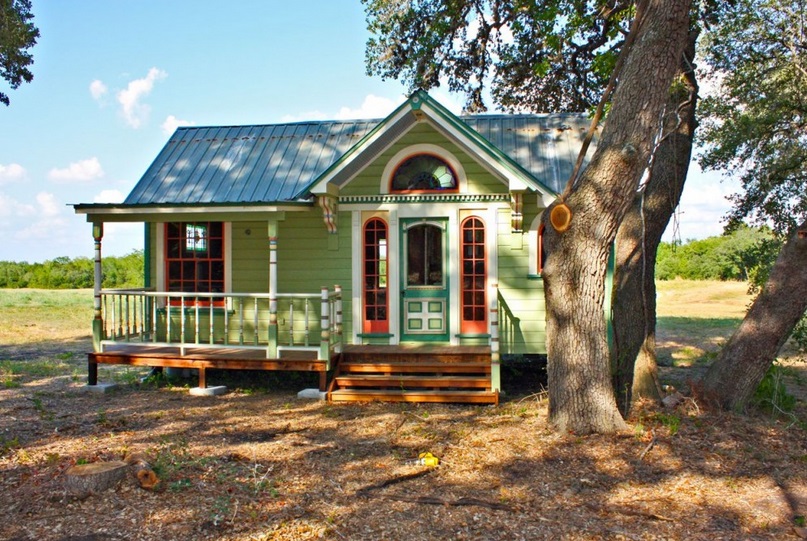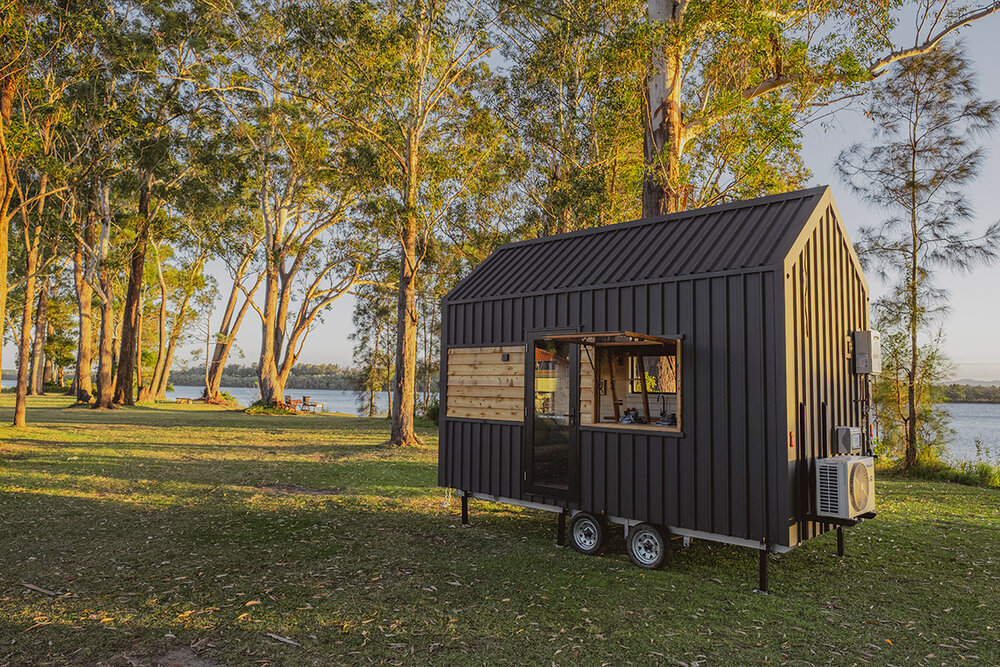The tiny house movement is growing rapidly across the US and in the Netherlands specifically, a lot of people are still unaware of tiny houses or the movement that they’ve influenced. What is a tiny home? Real estate codes define tiny houses as home which comprises less than 400 square feet in size in terms of floor area and excludes lofts.
In general, the term “tiny house” refers to a tiny, portable home with a minimalist style. As a result, they generally have inventive ways to use the space. They are, in the best case, self-sufficient (or generally so) and can be used as full-time homes. Although some of them are mobile, not all of them are and it’s not an option.
Typically, they are around 8’x16 inches and promote simplicity in order to achieve the goal of debt-free living. Smaller home = bigger life. The typical tiny home includes the living space as well as a loft for sleeping as well as a kitchen as well as a bathroom.
A lot of them are constructed to be completely off-grid and self-contained and generate their own electricity and water. Many people construct their own homes, and there are prefabricated options available for purchase.
Why Is There Demand For A Tiny House?
The movement for tiny houses is based on the idea of having only the essentials in a physical sense and then being reintroduced to the fundamentals of living. The idea is to build an environmentally-friendly, healthy life that’s as free of debt as feasible.
The owner is free to invest more of their time creating relationships and having unforgettable life experiences instead of paying rent or other unnecessary, material items in life.
The average size of a home has increased through the years, and the size of families has started to shrink. The movement for a tiny house is about bringing our expectations with our needs and focusing on larger lives and smaller living spaces.
Things don’t (or at the very least, shouldn’t) bring us joy. We should be happy in our lives. And Americans particularly have lost faith in the notion that owning more expensive items is a sign that we’re living more and better lives.
Why Is There Demand For Small Living Spaces?
The movement for tiny houses began in the United States in response to the market crash in housing and natural disasters, such as Hurricane Katrina put many youngsters in a predicament where purchasing a home was not an option.
The demand for affordable housing was growing quickly, and many people started building smaller homes in order to satisfy this demand.
Jay Shafer and Dee Williams are among the pioneers of the tiny-house movement. A lot of the pioneers started making their homes using trailers. This allowed them to avoid limiting the minimum dimensions of homes. This is why many of them are mobile.
The trend grew more quickly than anyone could’ve imagined. There are books, television programs, and films about the subject. In addition, around 4000 people attended the first Tiny House Jamboree event in 2015.
The world took note and started following the American-inspired movement. Tiny house enthusiasts are starting to build all over Europe, and Australia.
Different Types Of Tiny Houses
There is no standard dimension or shape or arrangement. They can be found in the form of anything from log cabins to recycled shipping containers, as well as smaller variants of the traditional homes.
The most notable kinds of tiny homes are the following:
Tumbleweed Tiny Homes

The four houses that are the basic models of this manufacturer all feature wooden exteriors, but they differ greatly in style from modern to rustic. The sizes range between 117 and 221 square feet and they are all trailer-mounted and mobile. Tumbleweed provides custom-built homes and plans for building your own tiny home.
Visit their website at www.tumbleweedhouses.com for more information.
Tiny Texas Houses

These are bigger and longer-lasting than the ones made by Tumbleweed. They are available in two sizes: either 240 or 336 square feet. They are made entirely of recycled materials. They are built within Luling, Texas, and then transported to and put up at the home of the homeowner.
Visit their website at www.tinytexashouses.com for more information.
Tiny Hauslein

Tiny Hauslein creates high-end tiny houses for a better, more sustainable way of living in Australia and offers three different models, Gunyah, Sojourner, and Grand Sojourner. Each model is easily customized, made to order, and prices start from $93,500.
Visit their website at www.hauslein.com.au for more information.
Shipping Container Home
Metal shipping containers are often salvaged materials utilized to construct small, unique homes. Recycling these containers isn’t always economical, and they’re often scrapped. Small housebuilders like G-Pod have begun to use these containers to build trendy homes at a very low cost.
Small Luxury Homes
Although tiny homes aren’t big there’s no reason to think they shouldn’t have the luxury feel of a home if that’s what you’re looking for in your life. A few homeowners have their homes stocked with luxury amenities, such as home automation and surround sound, in-floor heating, and small hot tubs for less than what it would cost to own a brick and mortar home with these features.
Micro-Apartments
Some tiny houses are actually apartments. Most of them are less than 400 square feet, they give individuals who are just beginning their journey the possibility of having an apartment in large cities, where paying rent on a larger apartment would be a nightmare.
Advantages Of Living In A Tiny House
Freedom
Owners have the possibility of moving around at their own pace, without the need to sell or purchase a new home every time they move. This is especially popular with millennials with jobs that are remote or who have a freelance life and don’t have to stay in one place for work.
Basic Living
The entire goal of this movement is to promote simple living. Many people opt to reside in tiny homes due to the fact that the current standard of living isn’t important to them, which results in a conflict of value for those who live in them. Tiny house living relieves this and lets you concentrate on the things that matter to you.
Sustainability
Anyone who is striving to be more eco-friendly should consider at a minimum looking into living in tiny homes. You generate less waste, consume less energy, and in the end reduce the carbon footprint of your home.
Money
Moving into a smaller property can alleviate the problem of debt being faced by our younger generations. On average, typical homeowners spend between 25 and 50 percent of their earnings on housing costs. Tiny house owners can get a significant portion of their income and put it for other costs or luxury items like travel and taking more time off from work, or whatever is essential for you in the present.
Social Connections
People who own tiny houses have to travel out into the world to get things like laundry or internet access. That means you’ll be able to meet many of your neighbors whom you wouldn’t otherwise meet when you were confined in your big house for the entire day. This will also help the local economy since the laundromat earns money and families are aided through the business you bring to them.
Disadvantages Of Living In A Tiny House
Zoning
Codes and laws vary from state-to-state, and occasionally between counties within one state. Therefore, finding a location to build your tiny home legally is an extensive research project. A lot of places view these tiny homes as RVs and they will not allow you to live on the property in the form of a “vehicle” for over 30 consecutive days.
Financing & Insurance
Finding financing and insurance for this kind of structure is an issue since the worth of the house isn’t readily determined and a lot of people aren’t sure if it’s an automobile and doesn’t consider it to be a house.
Builders
Finding a suitable builder you can trust could be a difficult task. In a field that is still in its infancy, you won’t find many builders who have adequate experience. In addition, most of the builders who are willing to work for you have never constructed a tiny house before.
Less Space & Storage Room
Obviously, one aspect of reducing the amount of space you have is that…you are left with less room. Many homeowners spend a great deal of time planning their homes in order to maximize the space available in order to ensure that you take in the few items you think are necessary within the space you create for yourself.
[1] Featured image credit: CNN
Written by Norah Clark, verified, and edited by David Myer.
